EDitorial Comments
Birthday Boy: Philip José Farmer
Were he still with us, Philip José Farmer today would be celebrating his 97th birthday. As it was, he had a pretty long run, passing in early 2009 shortly after turning 91. I suspect he’s best remembered by readers of this blog and Blood ‘n’ Thunder as the author of Tarzan Alive (1972) and Doc Savage: His Apocalyptic Life (1973), fanciful “biographies” of those enduring pulp-fiction creations and the seminal works establishing what has come to be known as the “Wold Newton Universe.” To others, especially those in the science-fiction community, he’s probably regarded more highly for two multi-novel sagas, one revolving around the World of Tiers (1965-93) and the other around Riverworld (1971-83). The latter, which always appealed to me, posits the existence of a planet over which winds a huge river valley populated by resurrected Earthlings.
Farmer certainly deserves kudos for those works, but he also merits recognition as (in my opinion) the last major science-fiction writer to get his start in pulp magazines. He broke into print with “O’Brien and Obrenov,” a short story in the March 1946 issue of Adventure, but it was “The Lovers,” a novella first published in the August 1952 Startling Stories, that attracted attention and marked him as a comer.
Under the editorship of Samuel Mines Startling had moved beyond the adolescent space opera of its early years and was publishing a better grade of speculative fiction. When he purchased Farmer’s provocative story Mines had to have known it would create a sensation, which is exactly what happened. For those who don’t know, “The Lovers” revolves around the romance and sexual relationship between a male human and a female extraterrestrial (with humanoid characteristics, of course). Previous SF writers had avoided sexual themes and few pulp editors would have countenanced publishing such a story, but the tyro’s mature, thoughtful treatment of this subject matter disarmed Mines. With “The Lovers” Farmer made what arguably was the most audacious debut in the genre’s history. Although it’s now more than 60 years old, the story holds up beautifully and can be enjoyed even by readers unaware of its historical significance.
 “The Lovers” won Farmer a richly deserved 1953 Hugo Award for Most Promising New Talent. It was followed by “Moth and Rust” (Startling Stories, June 1953), an equally assured story that didn’t have quite the same impact as its predecessor. But Farmer was on his way, and in subsequent SF works he frequently displayed the same audacity and inventiveness that had distinguished his maiden effort. He wrote for pulps and digests alike, expanding both “The Lovers” and “Moth and Rust” in the early Sixties to market them as paperback originals.
“The Lovers” won Farmer a richly deserved 1953 Hugo Award for Most Promising New Talent. It was followed by “Moth and Rust” (Startling Stories, June 1953), an equally assured story that didn’t have quite the same impact as its predecessor. But Farmer was on his way, and in subsequent SF works he frequently displayed the same audacity and inventiveness that had distinguished his maiden effort. He wrote for pulps and digests alike, expanding both “The Lovers” and “Moth and Rust” in the early Sixties to market them as paperback originals.
Phil Farmer never made any secret of his affection for the pulp-magazine heroes of his youth, and in 1969 he wrote a still-controversial novel, originally published in wraps by Essex House, that seemed to poke fun at two of them. A Feast Unknown featured thinly disguised simulacrums of Tarzan and Doc Savage, dubbed Lord Grandrith and Doc Caliban respectively. Farmer made them half-brothers — their father being Jack the Ripper (!) — initially at odds but eventually allied against a mutual adversary bent on world domination. Farmer larded the novel with extremely graphic scenes of sex and violence, alienating some readers but dazzling others with its — there’s that word again — audacity. Two sequels, Lord of the Trees and The Mad Goblin, followed in 1970.
The Grandrith/Caliban series led to Farmer’s ersatz biographies of Tarzan and Doc Savage, which established a genealogical connection between the two and sparked development of what PJF scholar Win Scott Eckert later dubbed the “Wold Newton Universe,” so named for the small Yorkshire village where a meteorite fell in 1795. According to Farmer, the highly radioactive fragment contaminated the occupants of a passing coach nearby and produced genetic mutations in their progeny. Eventually he incorporated into the Wold Newton extended family such popular pulp characters as The Shadow, G-8, The Spider, Sam Spade, and The Avenger, as well as Doc and Tarzan. He also proposed genetic linkages to other favorites of mystery and adventure fiction, including Sherlock Holmes (and his nemesis, Professor Moriarty), Fu Manchu (and his nemesis, Nayland Smith), Raffles, Allan Quatermain, Solomon Kane, The Scarlet Pimpernel, Nero Wolfe, James Bond, and others too numerous to list in this space. The “Universe” also is home to fictional characters not descended from the coach occupants affected by the 1795 meteor strike.
Another controversial product of Farmer’s inventiveness was Venus on the Half-Shell, a 1974 novel serialized in The Magazine of Fantasy and Science Fiction prior to its publication the following year as a paperback bylined to Kilgore Trout, a fictional scrivener created by Kurt Vonnegut for his 1965 novel God Bless You, Mr. Rosewater. Trout, who made appearances in subsequent Vonnegut yarns, is described as a science-fiction writer who sells primarily to cheesy porn magazines. Farmer had the idea of expanding a story fragment referred to in Mr. Rosewater. He approached Vonnegut for permission, which was granted, but the Slaughterhouse Five author reportedly disliked Venus on the Half-Shell and resented its being assumed to be one of his own stories. Farmer later claimed that Vonnegut angrily chewed him out in a profanity-laced phone call.
During his lengthy career Philip José Farmer won three Hugos, the 2000 Damon Knight Memorial Grand Master Award, and the 2001 World Fantasy Award for Life Achievement. All told he authored nearly 60 novels and over 100 shorter works of fiction. His many essays and articles appeared in pro and fan publications alike.
Today, his output — especially the Wold Newton material — is analyzed and celebrated by a small but dedicated cadre of enthusiasts, some of whom assemble yearly at an event known as Farmercon. In recent years, Farmercon has operated under the auspices of PulpFest, an annual gathering of pulp-fiction enthusiasts that’s familiar to Blood ‘n’ Thunder readers. The contributions of Farmercon attendees to PulpFest are always interesting, and if you plan on joining us in Columbus this August, consider sitting in on their panels and presentations. They do a bang-up job of keeping the PJF flame burning.
209 thoughts on “Birthday Boy: Philip José Farmer”
Leave a Reply
Recent Posts
- Windy City Film Program: Day Two
- Windy City Pulp Show: Film Program
- Now Available: When Dracula Met Frankenstein
- Collectibles Section Update
- Mark Halegua (1953-2020), R.I.P.
Archives
- March 2023
- July 2021
- May 2021
- March 2020
- February 2020
- December 2019
- November 2019
- October 2019
- September 2019
- August 2019
- May 2019
- April 2019
- March 2019
- February 2019
- December 2018
- November 2018
- October 2018
- August 2018
- June 2018
- February 2018
- December 2017
- October 2017
- September 2017
- August 2017
- May 2017
- April 2017
- February 2017
- September 2016
- August 2016
- July 2016
- June 2016
- November 2015
- October 2015
- September 2015
- August 2015
- July 2015
- June 2015
- May 2015
- April 2015
- March 2015
- February 2015
- January 2015
- August 2014
- July 2014
- June 2014
- May 2014
- April 2014
- January 2014
- December 2013
- September 2013
- August 2013
- July 2013
- June 2013
- May 2013
- April 2013
- March 2013
- February 2013
- January 2013
- December 2012
- October 2012
- September 2012
- August 2012
- July 2012
- June 2012
- May 2012
Categories
- Birthday
- Blood 'n' Thunder
- Blood 'n' Thunder Presents
- Classic Pulp Reprints
- Collectibles For Sale
- Conventions
- Dime Novels
- Film Program
- Forgotten Classics of Pulp Fiction
- Movies
- Murania Press
- Pulp People
- PulpFest
- Pulps
- Reading Room
- Recently Read
- Serials
- Special Events
- Special Sale
- The Johnston McCulley Collection
- Uncategorized
- Upcoming Books
- Western Movies
- Windy City pulp convention
Dealers
Events
Publishers
Resources
- Coming Attractions
- Field Guide to Wild American Pulp Artists
- MagazineArt.Org
- Mystery*File
- ThePulp.Net

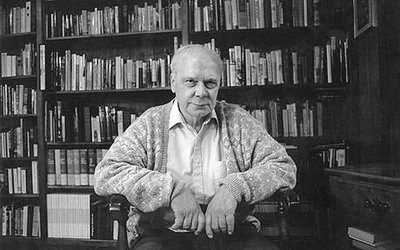

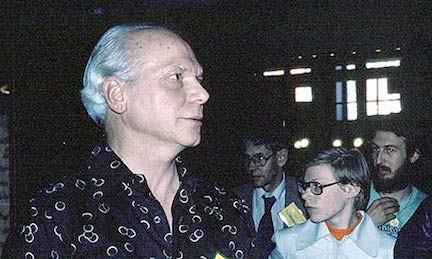

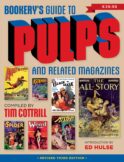
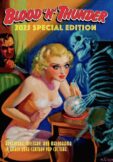
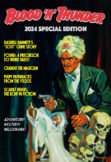
I wonder that perhaps he didn’t actually die; rather he mysteriously woke up to find himself lying beside a great river and a toadstool-shaped device that dispensed food 😉
I first encountered the work of Phil Farmer when I was given a copy of the December 1952 issue of Startling Stories which had Sail On! Sail On! by a boyfriend of my sister back around 1955 and that is one of those stories that sticks with you. I also read the beginning of his Riverworld series when it began in Worlds of Tomorrow. And I was hooked on that universe he created. He was a unique writer.
An excellent post Ed. I had been a Farmer fan for a few years before I even realized he wrote for actual pulp magazines in his earlier days. I have both copies of the Startling Stories issues with The Lovers and Moth & Rust and I am really looking forward to reading them.
I flipped through the Lovers and the Virgin Finlay interior artwork is particularly well done.
Yes Ed, definitely an excellent post. I remember seeing Farmer’s Doc Savage bio when it came out in hardcover. I was still in high school and reading the Bantam Doc reprints. I did not know about his science fiction work until later but I have enjoyed most of his books. The Lovers is one I should try.
Nice piece on Farmer, always one of my favorites. A little Farmer Trivia:
When Chas Chandler (Animals bass player) first discovered Hendrix in NYC and took him back to London, his apt. there was loaded with SF paperbacks. Hendrix was also a big SF guy. Somebody told me once that Jimi got the idea for Purple Haze from watching the tubes glow in the back of a Marshall stack while high on acid. Nope. Purple Haze came from a dream after reading “Night Of Light” by Farmer. (Third Stone From the Sun came about after reading EARTH ABIDES by George O. Smith.)